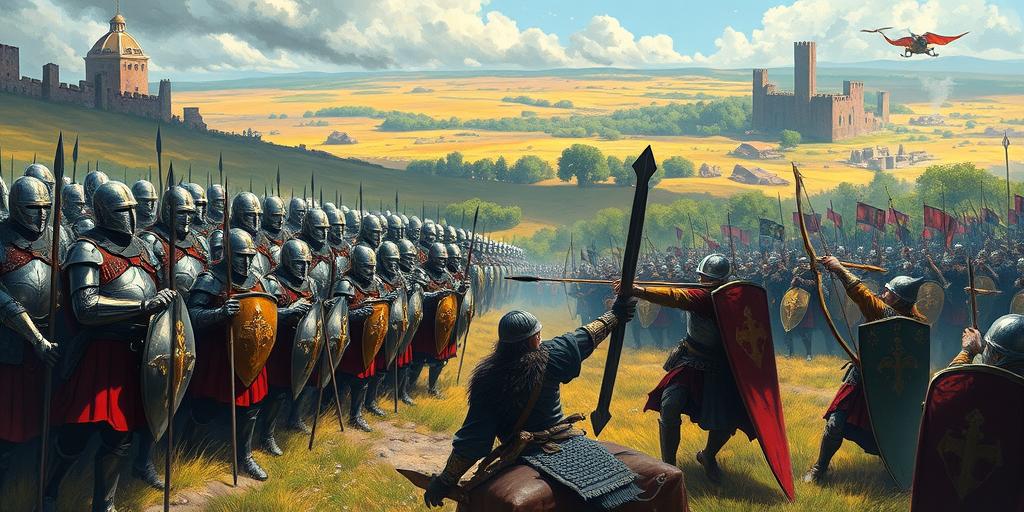In the realm of tabletop wargaming, the clash of armies is brought to life through strategic formations and tactical maneuvers. Among the diverse array of battle formations, two prominent approaches stand out: rank and flank and skirmish formations. Each offers distinct advantages and disadvantages, shaping the ebb and flow of combat on the tabletop battlefield. This article delves into the intricacies of these formations, exploring their characteristics, strengths, weaknesses, and optimal usage.
Rank and Flank Formation:
Rank and flank formation, a staple of historical and fantasy wargames, emphasizes rigid lines of troops arrayed in close order. Units typically consist of multiple ranks of soldiers, with each rank positioned directly behind the preceding one. This formation maximizes frontage, allowing a greater number of troops to engage the enemy simultaneously.
Key Characteristics:
- Dense Formation: Troops are packed closely together, providing mutual support and cohesion.
- High Frontage: The formation presents a wide front to the enemy, maximizing the number of attacking models.
- Limited Maneuverability: The dense formation restricts movement and flexibility, making it difficult to respond to rapidly changing battlefield conditions.
Strengths:
- Offensive Power: The high frontage allows for concentrated attacks, overwhelming enemy defenses through sheer numbers.
- Defensive Stability: The dense formation provides resilience against enemy assaults, with multiple ranks absorbing damage and maintaining cohesion.
- Psychological Impact: The sight of a solid line of troops can intimidate opponents, bolstering morale and discouraging flanking maneuvers.
Weaknesses:
- Vulnerability to Flanking: The extended flanks are susceptible to encirclement and attacks from the sides or rear.
- Ineffectiveness in Rough Terrain: The rigid formation struggles to navigate uneven or obstructed terrain, hindering movement and cohesion.
- Target for Area-of-Effect Attacks: The dense formation makes units vulnerable to spells, artillery, and other area-of-effect attacks.
Optimal Usage:
Rank and flank formation excels in situations where maintaining a strong defensive line and delivering concentrated attacks are paramount. It is particularly effective in open terrain, where the wide frontage can be fully exploited. However, caution must be exercised to protect the flanks and avoid encirclement.
Skirmish Formation:
In contrast to rank and flank, skirmish formation prioritizes mobility, flexibility, and individual initiative. Units typically consist of loosely arranged troops, spread out across a wider area. This formation sacrifices frontage for maneuverability, allowing skirmishers to harass the enemy, exploit gaps in their lines, and evade superior forces.
Key Characteristics:
- Loose Formation: Troops are spread out, minimizing vulnerability to area-of-effect attacks.
- High Maneuverability: The loose formation enables rapid movement and adaptation to changing battlefield conditions.
- Limited Frontage: The formation presents a narrow front to the enemy, reducing the number of attacking models.
Strengths:
- Harassment and Disruption: Skirmishers can harass enemy formations, disrupt their movements, and pick off isolated units.
- Flanking and Ambush Tactics: The mobility of skirmishers allows them to exploit gaps in enemy lines, launch flanking attacks, and set up ambushes.
- Adaptability to Terrain: Skirmishers excel in rough terrain, using cover and concealment to their advantage.
Weaknesses:
- Vulnerability to Melee Combat: The loose formation provides little protection against enemy assaults in close combat.
- Limited Offensive Power: The narrow frontage reduces the number of attacking models, limiting the ability to deliver concentrated attacks.
- Susceptibility to Morale Shocks: The dispersed nature of the formation makes units vulnerable to morale shocks and routs.
Optimal Usage:
Skirmish formation is ideal for harassing the enemy, disrupting their formations, and exploiting terrain advantages. It is particularly effective in woodland, urban, or mountainous environments, where the maneuverability of skirmishers can be fully utilized. However, skirmishers must avoid direct engagements with superior forces and rely on hit-and-run tactics.
Conclusion:
Rank and flank and skirmish formations represent fundamentally different approaches to warfare, each with its own strengths, weaknesses, and optimal usage. Rank and flank emphasizes offensive power and defensive stability, while skirmish formation prioritizes mobility, flexibility, and individual initiative. By understanding the nuances of these formations, wargamers can make informed decisions on the tabletop battlefield, maximizing their chances of victory.









